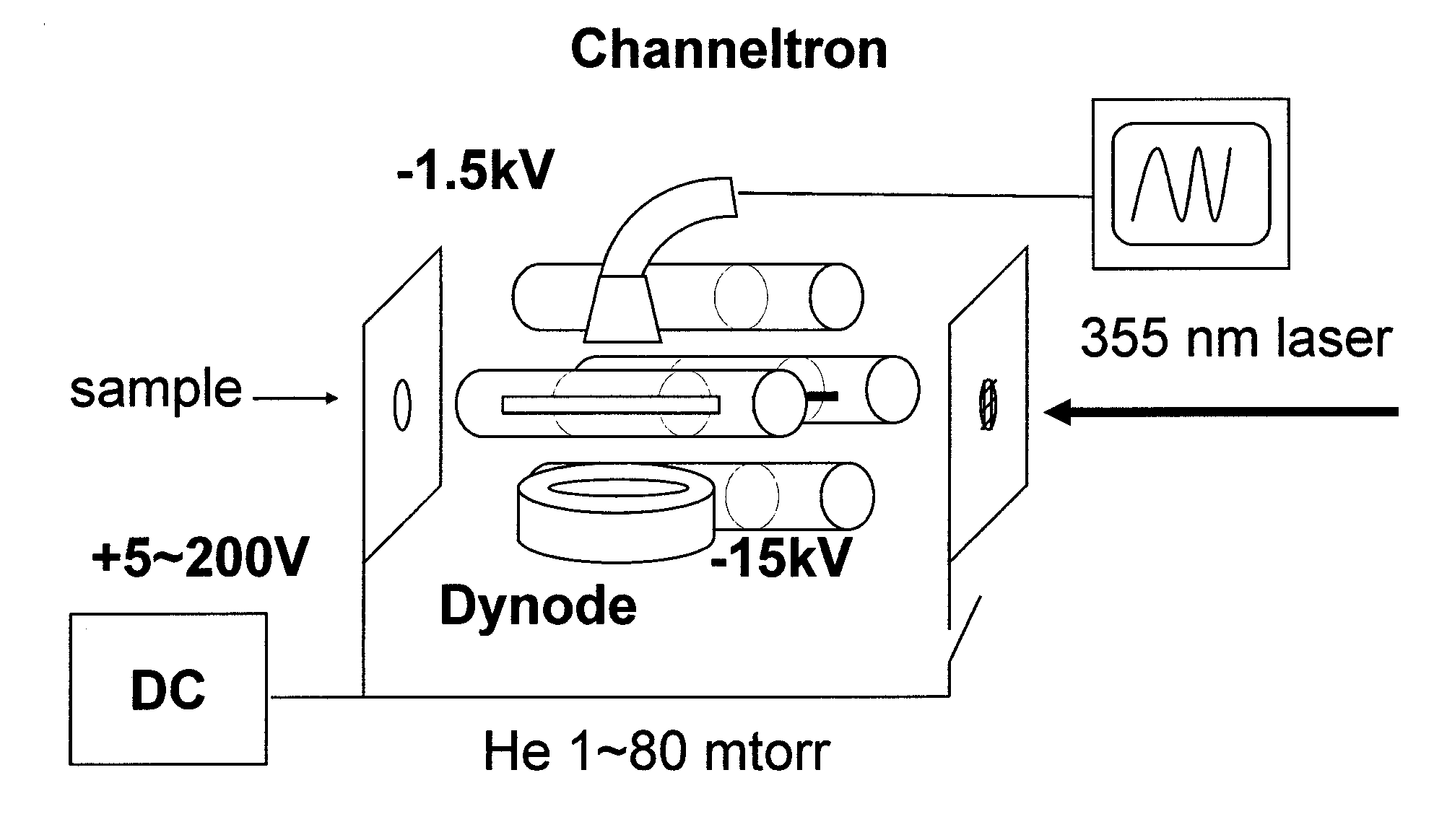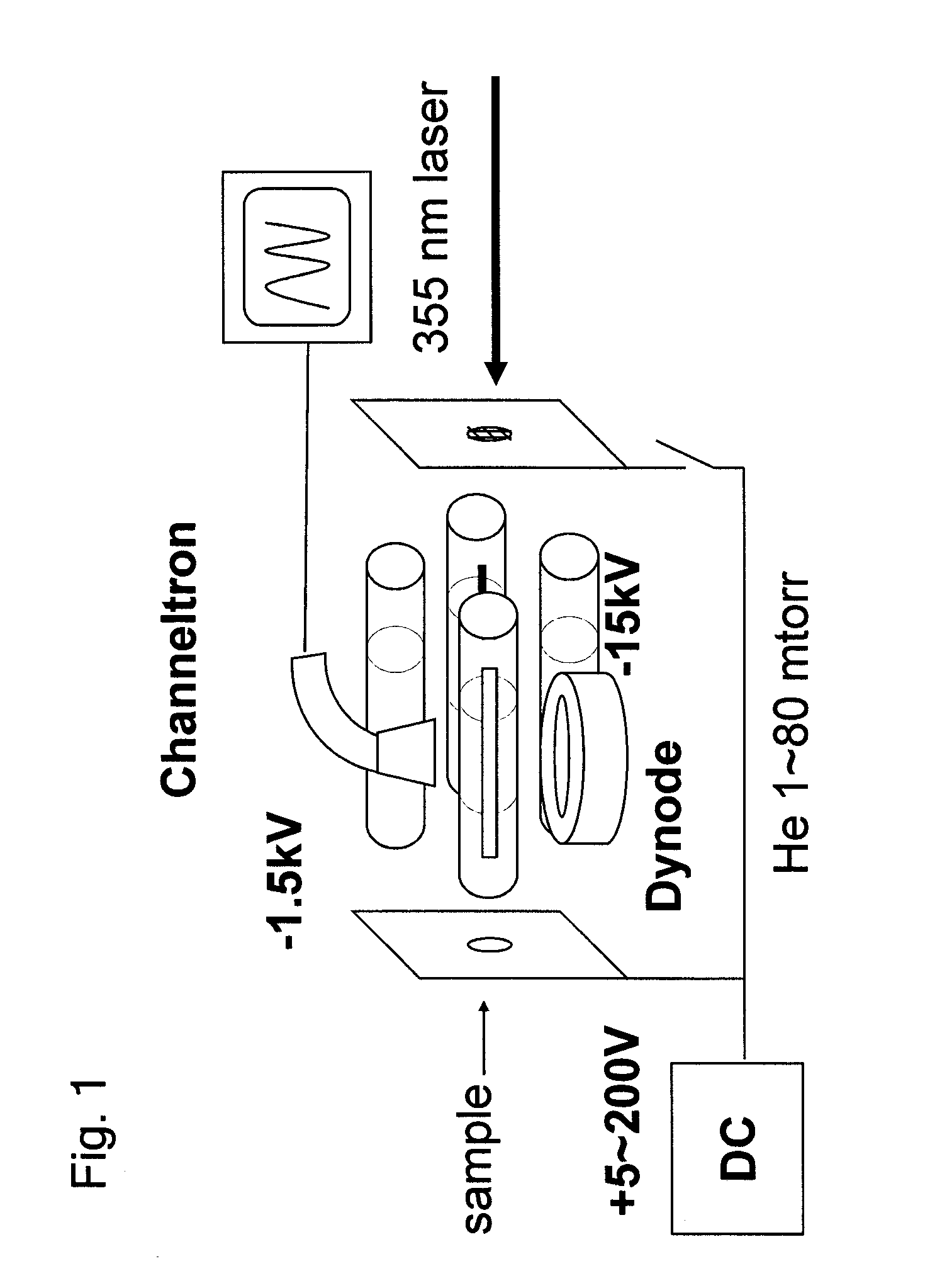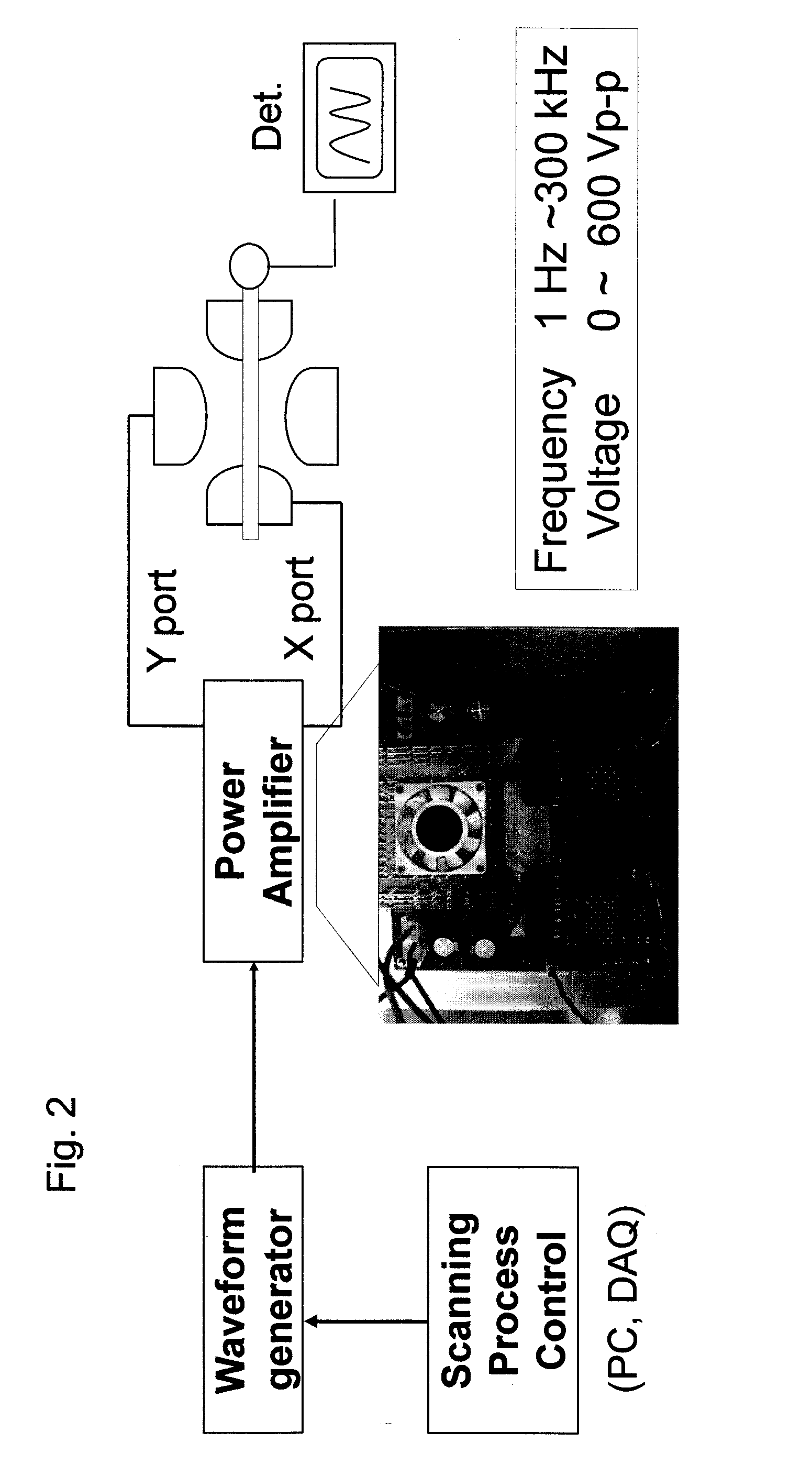Frequency scan linear ion trap mass spectrometry
a mass spectrometry and linear technology, applied in the field of frequency scan linear ion trap mass spectrometry, can solve the problems of unnecessarily complex mass spectra, difficulty in rapidly measuring biomolecules or macromolecules of high mass-to-charge ratio, and difficulty in mass spectrometry, etc., and achieve the effect of high resolution
- Summary
- Abstract
- Description
- Claims
- Application Information
AI Technical Summary
Benefits of technology
Problems solved by technology
Method used
Image
Examples
example 1
[0036]The frequency scan MALDI-LIT mass spectrum of Cytochrome C, MW 12,360, is shown in FIG. 3. An RF of 170 kHz was employed as the trapping frequency at 650 Vp-p. After that, the frequency scanning process was carried out from 170 kHz to 70 kHz during 100 ms. The mass spectrum was collected with an oscilloscope. As shown in FIG. 3, the spectrum contained two distinctive peaks. The feature at m / z of about 12,360 was assigned to a singly charged Cytochrome C ion, and the feature at m / z of about 6,180 was assigned to a doubly charged Cytochrome C ion.
example 2
[0037]The frequency scan MALDI-LIT mass spectrum of BSA, MW 66,000, is shown in FIG. 4. The trapping frequency was 70 kHz, and the stationary amplitude of RF was 650 volt. The frequency scanning process was carried out from 70 kHz to 40 kHz through 100 ms sweeping time.
example 3
[0038]The frequency scan MALDI-LIT mass spectrum of IgG, a 150 kDa protein, is shown in FIG. 5. This mass spectrum was collected by scanning the RF from 80 kHz to 20 kHz. During the 100 ms sweeping time, the stationary amplitude of RF was also 650 volt. This frequency scan MALDI-LIT mass spectrum demonstrated that the methods of this invention can be used to extend the range of observed mass-to-charge ratios to values as much as twenty-five times greater than without the frequency scanning methods.
[0039]A frequency scan method can be used for a linear ion trap. For tuning a specific resonant frequency, the ion trap may be coupled with a variable capacitor. The capacitance of the variable capacitor can be controlled to vary the resonance frequency of the RLC circuit. When the value of the inductor is fixed, the capacitance of the variable capacitor can be used to obtain a specific resonant frequency in a stepwise scan.
[0040]In additional aspects, this invention may provide a mass spe...
PUM
 Login to View More
Login to View More Abstract
Description
Claims
Application Information
 Login to View More
Login to View More - R&D
- Intellectual Property
- Life Sciences
- Materials
- Tech Scout
- Unparalleled Data Quality
- Higher Quality Content
- 60% Fewer Hallucinations
Browse by: Latest US Patents, China's latest patents, Technical Efficacy Thesaurus, Application Domain, Technology Topic, Popular Technical Reports.
© 2025 PatSnap. All rights reserved.Legal|Privacy policy|Modern Slavery Act Transparency Statement|Sitemap|About US| Contact US: help@patsnap.com



